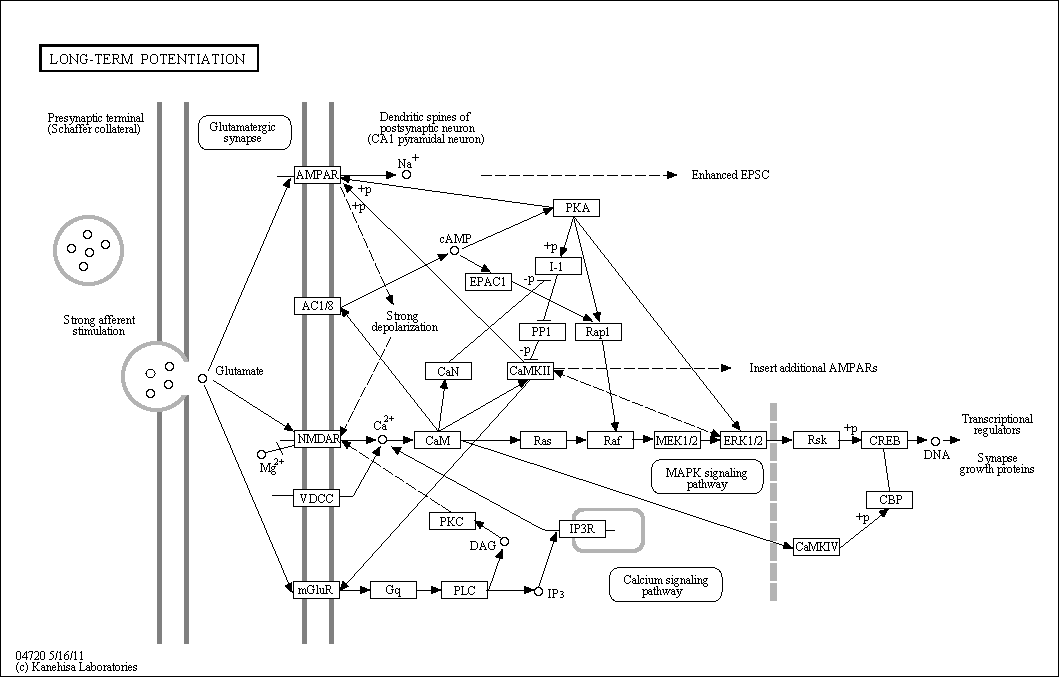Long-Term Potentiation
Description: Long-term potentiation has to do with certain pathways that have been used in the past. The nerve impulses of these pathways become stronger with time between two neurons that are acting in the same fashion. This was discovered in 1966 and has been a major topic of research dealing with Alzheimer's disease and drug addiction.
There are three different types of LTP. They are Hibbian LTP, Non-Hebbian LTP, and anti-Hebbian LTP. The anti-Hebbian LTP is a special case of Non-Hebbian LTP. The properties shown in LTP are associativity, cooperativity, input specificity and persistence.
The mechanism for long-term potentiation has several different steps that occur through the whole nervous system, and each type has a different mechanism, but overall have the same path. Small molecules called mediators control what happens in each phase. The first phase is short-term potentiation, but little is known about the mechanism. The next two phases are called early and late phase, respectively. Both of those phases have induction, maintenance, and expression periods.

Related BMRB Molecules
For complete information about pathway, see KEGG [map04720]
